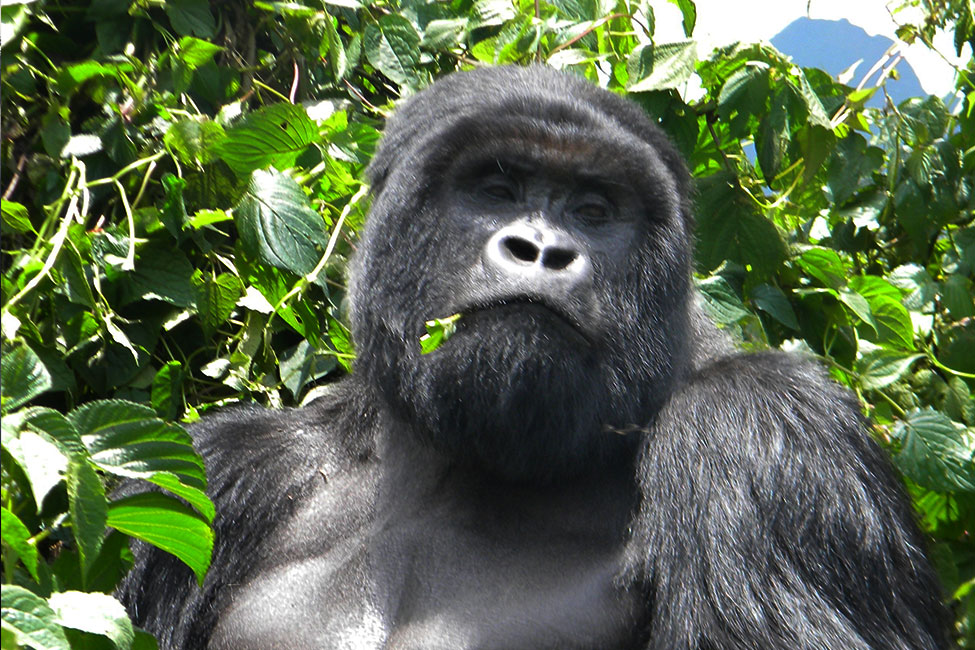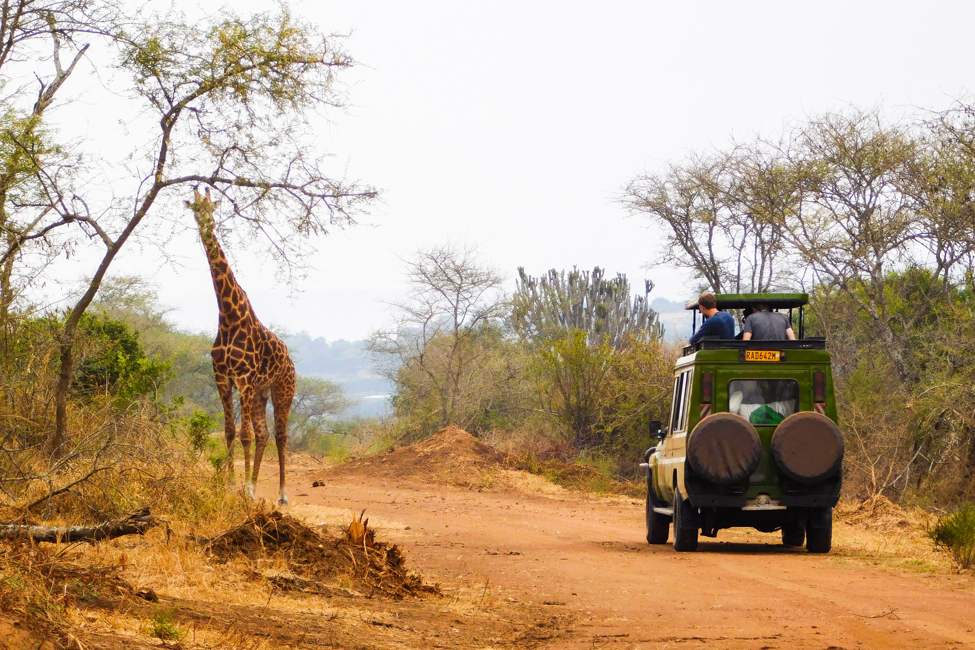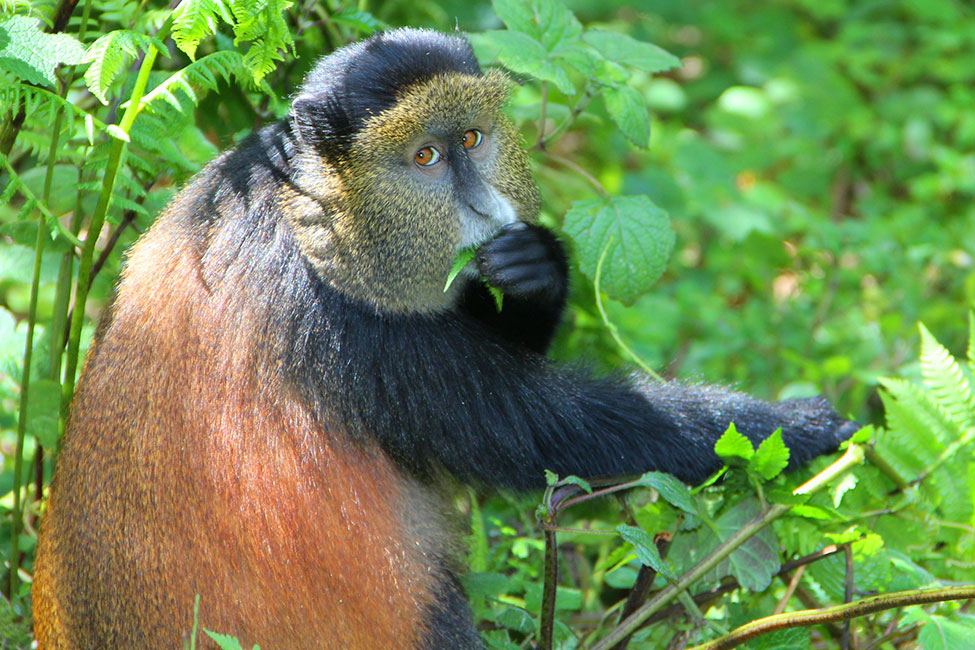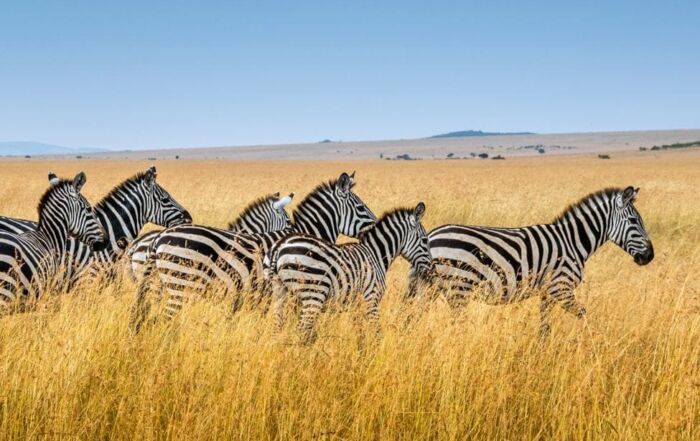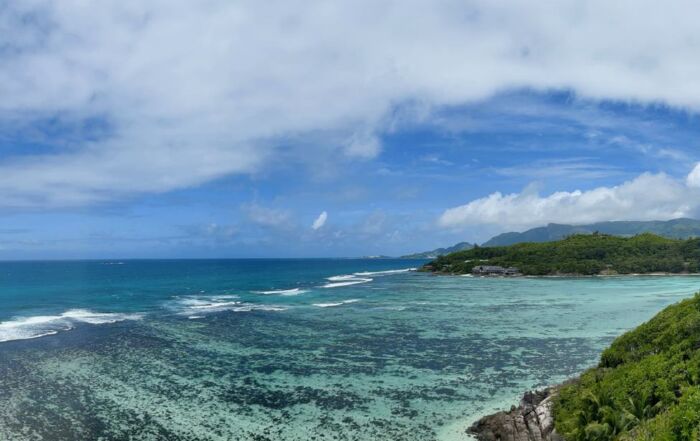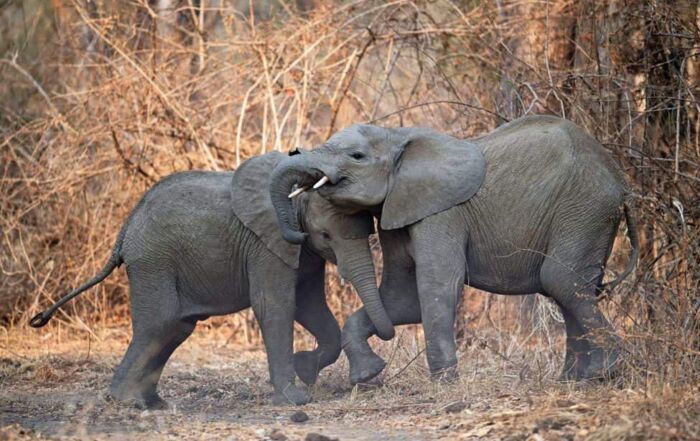7 Reasons to Visit Rwanda’s Volcanoes National Park
Founded in 1925 as Africa’s first national park, Volcanoes National Park in northwestern Rwanda is best known as a sanctuary for the region’s rare mountain gorillas.
And if that’s all the park had to offer, it would be enough. But Volcanoes National Park is also home to golden monkeys, rare birds, stunning crater lakes, and some of the most beautiful scenery imaginable.
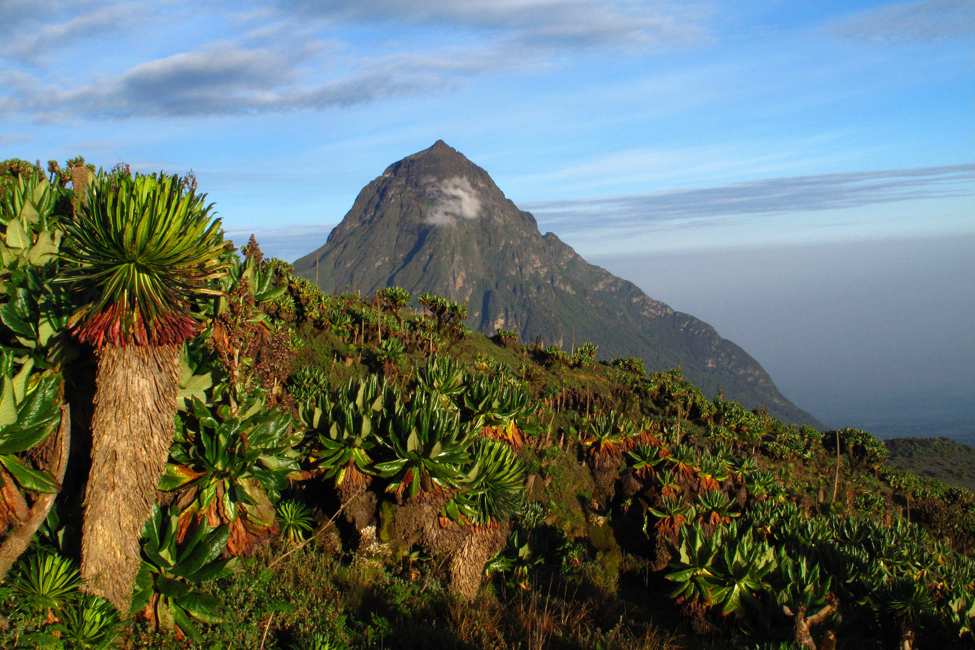
Hiking Volcanoes National Park in Rwanda leads to beautiful views of surrounding mountains in the Virunga Range, such as this one of Mount Mikeno in neighboring Democratic Republic of Congo.
Hiking in Volcanoes National Park
Volcanoes National Park is home to five of the eight volcanoes of the Virunga Mountains, a chain formed by the Albertine Rift that runs through the Democratic Republic of Congo, Rwanda, and Uganda. This chain is beloved by hikers for its beautiful scenery and unique landscape.
Most of the volcanoes in the park are now extinct, but Bisoke remains active, with its most recent eruption in 1957. Its chances of erupting in any given year are only one in 425, however. Next to gorilla viewing, hiking to the top of Bisoke to see its beautiful crater lake, Lake Ngezi, is one of the most popular activities in the park. Because Bisoke is located toward the center of the Virungas, a visit to its peak offers one of the best views of the mountain chain.
Volcanoes National Park has several other hiking trails that pass through diverse scenery, including bamboo forests, open grassland, swamp, and heath. In addition to the Lake Ngezi trail, hikers can enjoy nature walks on these trails:
- Mount Karisimbi Trail—This trail ascends Africa’s fifth tallest mountain (14,787 feet!). This two-day hike, with overnight camping at an elevation of 12,139 feet, is a fun way to prepare for ascending Mount Kilimanjaro.
- Mount Muhabura Trail—This is a full day hike that offers views of lakes Burero and Ruhondo when you reach the top.
- Mount Gahinga Trail—Mount Gahinga is the shortest mountain in the park. This trail is good for fit people who want to challenge but do not have much experience hiking.
All hikes require an inexpensive permit and an approved guide.
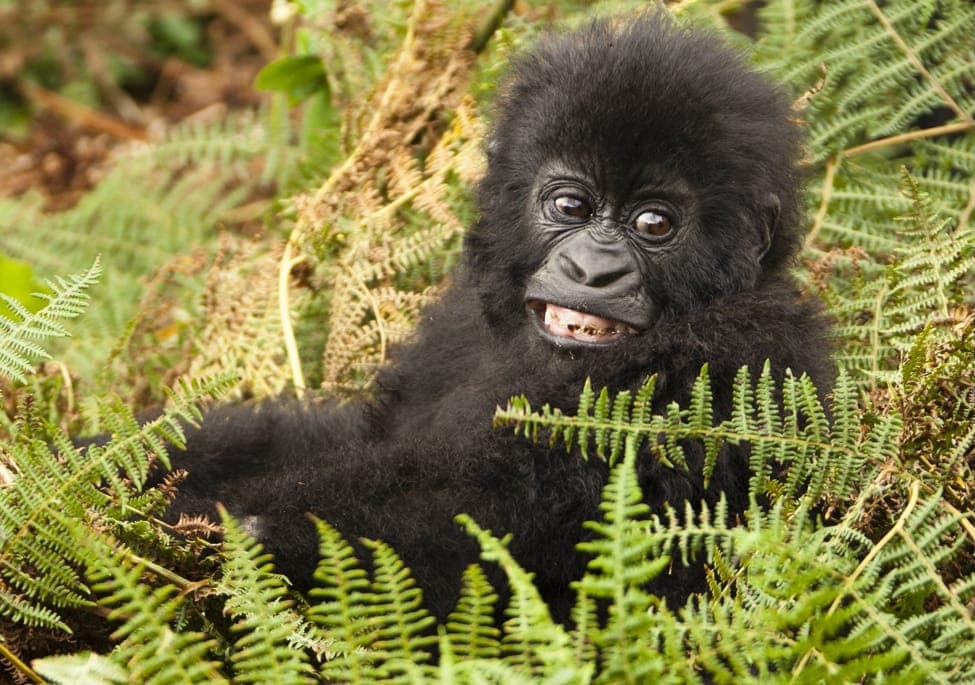
A young mountain gorilla plays in the greenery at Volcanoes National Park, Rwanda.
Mountain Gorillas in Volcanoes National Park
Volcanoes National Park is famous for its mountain gorillas. In 1981, only about 250 mountain gorillas were believed to survive in the wild. Today, that number has rebounded to more than 1,000, although they are still considered endangered.
Of the places where mountain gorillas can be seen, Volcanoes National Park is the closest to an international airport. Relative to the park’s size, it also has the most gorilla families that can be seen by visitors.
As of early 2022, Volcanoes National Park has 11 habituated families, according to the International Gorilla Conservation Program. “Habituated” means the gorilla family is in the “habit” of seeing humans and does not mind their presence. These are the mountain gorillas visitors can see on a visit to the park.
To see mountain gorillas, you must purchase a permit in advance of your visit. (If you travel with Ujuzi, we take care of that for you.) A park naturalist guides you through the park to find a habituated gorilla family and spend an hour with these incredible primates in their natural habitat. Read more about gorilla trekking.
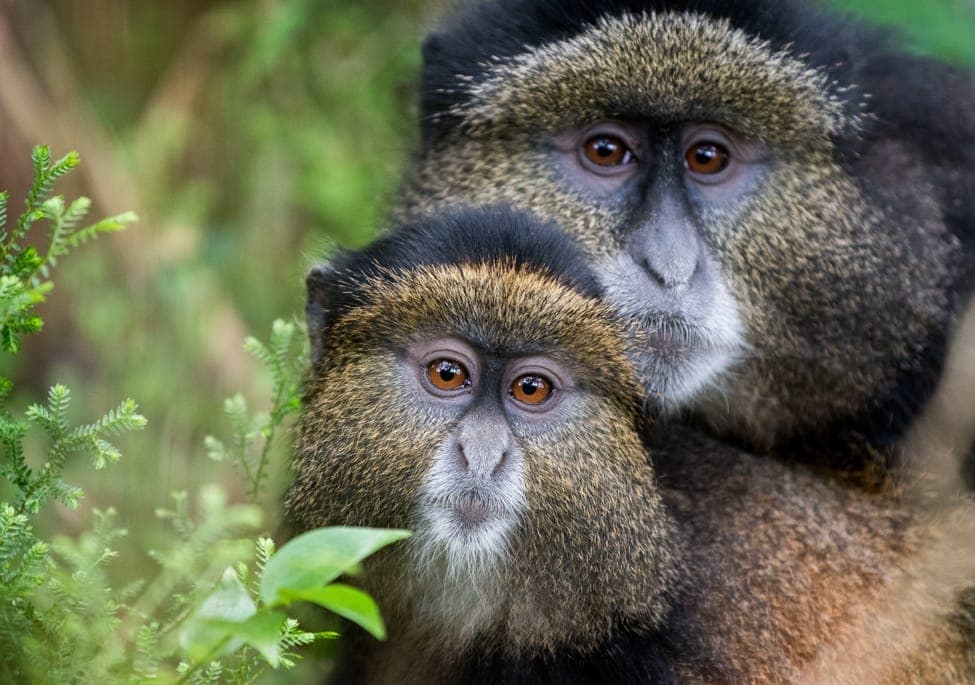
Golden monkeys, like this adult and child, are very sociable and live in large groups in Volcanoes National Park, Rwanda.
Golden Monkeys in Volcanoes National Park
Golden monkeys are another prime attraction of the park. These monkeys are found only in the Virunga Mountains, and Volcanoes National Park is the easiest place to see them.
The park offers guided golden monkey treks. These animals are very entertaining to watch. They are highly sociable and hang out in large family groups ranging in size from 30 to about 80—so you are likely not to just see one golden monkey on your trek, but many. Once you find a family group, you spend an hour watching them eat, groom, and play.
Our Rwanda Mountain Gorilla Extension sample itinerary includes a chance to see not only mountain gorillas, the golden monkeys, as well.

White-tailed blue flycatchers are one of the many colorful birds that can be seen in Volcanoes National Park, Rwanda.
Birds and Other Wildlife of Volcanoes National Park
Because much of the park is heavily forested, it can be difficult to spot other mammals. But that makes it all the more delightful when you see one! Keep your eyes peeled for black-fronted duikers, Cape buffalos, bushpigs, spotted hyenas, and bushbucks.
More than 170 bird species have been recorded at the park, and 13 of these are only found in the Virunga and Rwenzori Mountains. Rare birds you might find here include Lagden’s bushshrike and the Kivu ground thrush. Other notable birds include the white-tailed blue flycatcher, scarlet-chested sunbird, and gray-crowned crane.
Studies of these birds’ behavior and habitat helps scientists understand the effect of climate change on the Volcanoes National Park and how it may impact mountain gorillas and other animals.
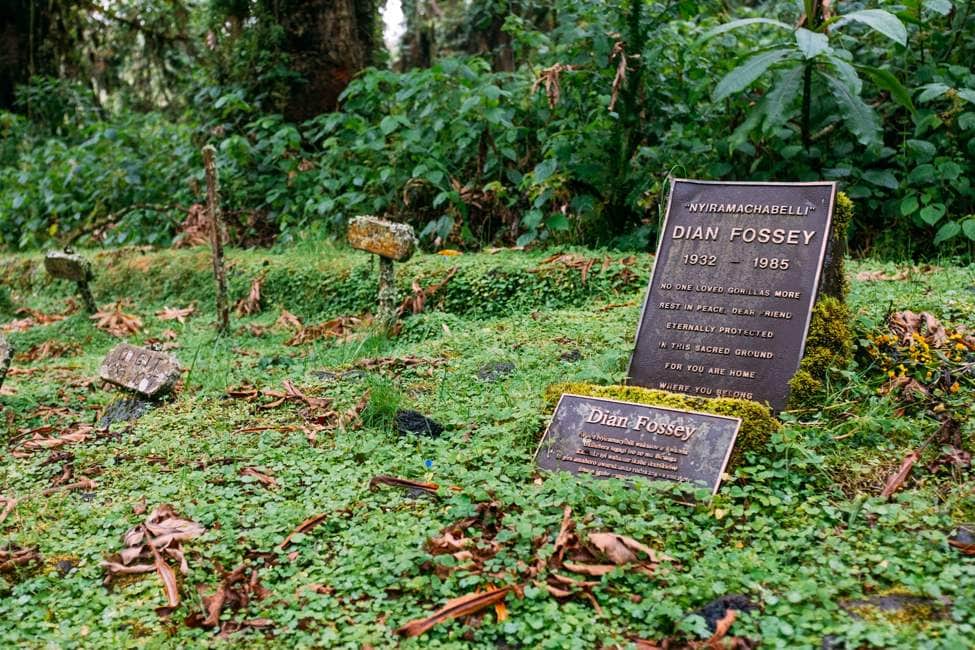
Primatologist Dian Fossey was laid to rest in a cemetery for mountain gorillas in Volcanoes National Park.
Dian Fossey’s Gravesite in Volcanoes National Park
Dian Fossey is widely credited with saving mountain gorillas from extinction when she brought international attention to their plight. She arrived at Volcanoes National Park in 1966 to study the behavior and ecology of mountain gorillas and, the next year, set up the Karisoke Research Center, which was originally located in the park.
In 1985, Dian Fossey was tragically murdered by unknown assailants. She was buried in a small cemetery on the slopes of Mount Karisimbi next to Digit, her closest gorilla friend, who became a victim of poaching in 1977. A hike to this gravesite is a moving experience, but also requires stamina—the trip from park headquarters and back can last three to five hours, depending on the weather. (The hike takes longer in the rain due to muddy and slippery conditions.)
In addition to visiting the gravesite, you will hike through the original site of Karisoke Research Center, much of which was destroyed during the Rwandan genocide of 1994, to see the remains of Dian Fossey’s cabin and the workers’ house and mess hall. The hike is guided by park staff, and a permit is required.
These sample itineraries include an option to hike to Dian Fossey’s gravesite:
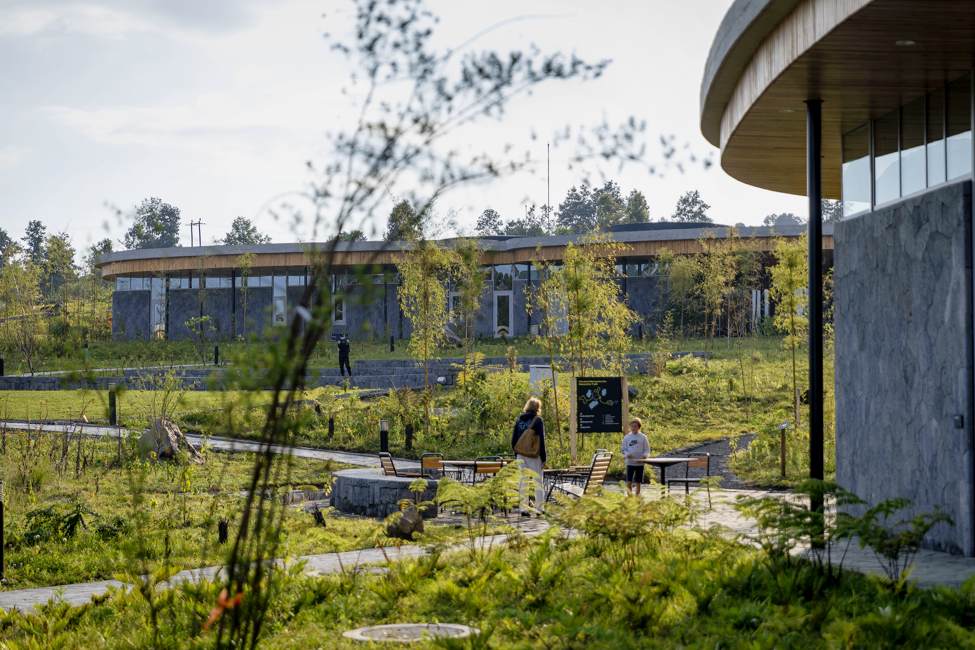
Located near Volcanoes National Park, the Ellen DeGeneres Campus of the Dian Fossey Gorilla Fund houses an excellent museum about gorillas and efforts to protect them. Photo by Visit Rwanda; used with permission.
Visit the world-class Dian Fossey Gorilla Fund Campus
Located near Volcanoes National Park, the Ellen DeGeneres Campus of the Dian Fossey Gorilla Fund is a world-class research and education facility completed in 2022. It supports research in gorilla conservation and science, runs education and community programs for Rwandans, and offers conservation and scientific training to university students from Rwanda and Congo. The fund’s staff includes 100 expert trackers who protect the local mountain gorillas.
The campus was made possible through a large seed donation by comedian Ellen DeGeneres, a long-time admirer of Dian Fossey. Its visitor’s center offers an immersive learning experience, including a 360-degree theater, fascinating virtual reality experiences, a number of engaging exhibits centering on gorilla conservation and science, and historical artifacts from Dian Fossey’s field work.
If you are at the park for a gorilla trek, visiting the campus first is a great way to prepare for your encounter. You will better understand mountain gorillas, and the displays will open your eyes to details you might not notice otherwise.
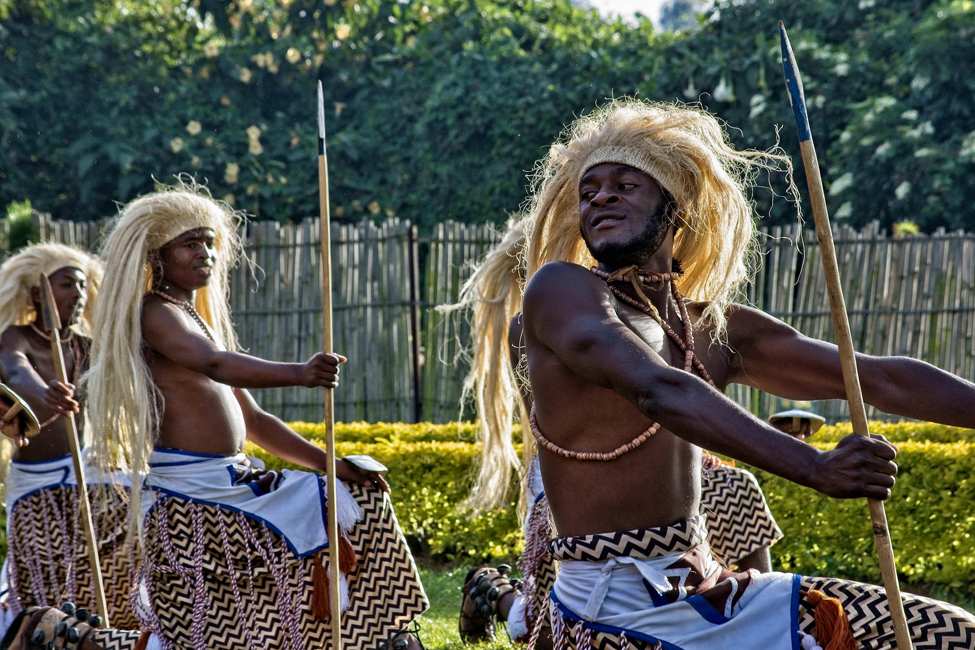
Rwandan men perform a traditional dance called the Intore dance at Iby’iwachu Cultural Village near Volcanoes National Park.
Iby’iwachu Cultural Village near Volcanoes National Park
Located near Volcanoes National Park in Kinigi, Iby’iwachu Cultural Village was founded by Edwin Sabuhoro, a young Rwandan conservationist who wanted to provide residents with an alternative to poaching for income.
Iby’iwachu Cultural Village lets you experience Rwandan traditions and history in a fun, interactive way while supporting the local community. Visitors can explore a banana brewery, visit replicas of the King’s palace and traditional homesteads, learn about plant medicines from traditional healers, participate in preparing local foods, and enjoy traditional dances.
The cultural village has drastically reduced poaching in and around Volcanoes National Park and is a source of pride for local residents. In 2008, Sabuhoro received a Young Conservationist Award from the International Union for Conservation of Nature (IUCN) for his work.
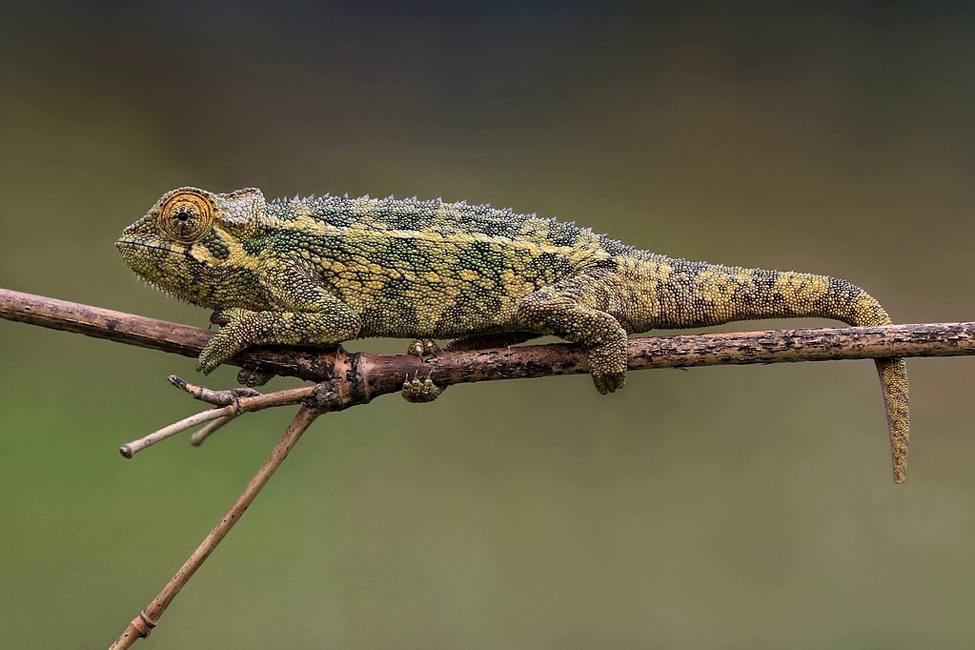
A rough chameleon perches on a branch near Mount Karisimbi in Volcanoes National Park. Photo by Charles J. Sharp.
Explore Volcanoes National Park on These Safaris
Visit Volcanoes National Park
Just 80 miles from Kigali International Airport (about a 2–3 hour drive), Volcanoes National Park is a must-see for any visitor to Rwanda. It is also a popular stop for travelers who are doing the bulk of their safari in another country. For example, many Ujuzi travelers have gone to Tanzania to explore the Serengeti and Ngorongoro Crater, then flown to Rwanda to see mountain gorillas in Volcanoes National Park.
Ready to plan your trip? Contact Ujuzi today.
Sign up for the Ujuzi Newsletter!
From top travel tips to innovative safaris and conservation movement, get inspired to plan your next African safari!
By submitting this form, you are consenting to receive marketing emails from: . You can revoke your consent to receive emails at any time by using the SafeUnsubscribe® link, found at the bottom of every email. Emails are serviced by Constant Contact


